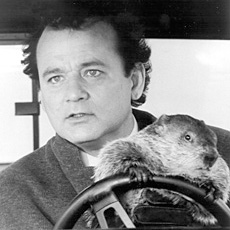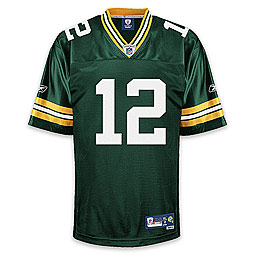Welcome to Déjà Vu Theater. In belated honor of Groundhog Day, and to recognize the birth, 105 years ago today, of Clyde William Tombaugh—the U.S. astronomer who discovered Pluto—we're going to start off this episode by re-running a post that a few of you (but probably only a few) have read before. I wrote it one year ago, after attending a talk in New York by my favorite astrophysicist, Neil deGrasse Tyson, on the topic of Pluto and its demotion from full-fledged planet to dwarf planet. Here we go, back in time...
Tyson was a knockout in telling the crazy story of Pluto's demotion.
We at The Naturalist’s Notebook love outer space—the beauty, the mysteries, the vastness. Scientists estimate the number of stars in the universe as one sextillion, or 10 to the 21st power. “That’s a thousand times more than all the words ever uttered by everyone who has ever lived,” said astrophysicist and Hayden Planetarium director Neil deGrasse Tyson the other night when I listened to him give a talk at a Barnes & Noble bookstore in New York.
Think of it another way some clear night when you’re gazing up and pondering: One sextillion letters, typed without spaces and each representing a different star, would fill two thousand trillion issues of the magazine I work for, Sports Illustrated, with nothing but text. And if you stacked up all those issues, the pile would extend 1.6 billion miles into the sky—more than halfway to Pluto (when it’s closest to the Earth).
Pause to absorb that.
Pluto, the endearing chunk of rock and ice that has long been a symbol of distant isolation, isn’t really that far away compared to the stars. At The Naturalist’s Notebook last year we discussed how long, at the speed of an airliner traveling 24 hours a day, it would take to reach celestial bodies. To get to Pluto you’d be buckled into that airplane seat for 685 years. Not bad, when you consider that to reach the nearest star (other than our Sun), you’d be riding the plane for almost 4.6 million years.
Pause to absorb that. And I don’t mean the question of where your luggage would end up.
In any case, what drew me to the Barnes & Noble was not Pluto’s weak gravity but deGrasse Tyson’s irresistible pull. The host of NOVA’s “Origins” series on PBS is an engaging, insightful and frequently hilarious speaker who makes science more understandable to the average person—one of our hopes for The Naturalist’s Notebook, as you know if you’ve stepped inside our quirky coastal Maine shop and exploratorium.
DeGrasse Tyson was at B&N to talk about his book The Pluto Files: The Rise and Fall of America’s Favorite Planet, now available in paperback. His recounting of the global uproar he helped create by contributing to Pluto’s demotion from planet to dwarf planet in August 2006 was a brilliant off-the-cuff riff on everything from the flood of angry mail he received (“Some people like Pluto,” wrote a young girl. “If it doesn’t exist then they don’t have a favorite planet. Please write back, but not in cursive because I can’t read in cursive”) to the Disney-prompted romanticizing of what had been the ninth planet (“I think if we’d demoted Neptune, no one would have cared,” said deGrasse Tyson) to the time he posed for a photo with Bill Nye the Science Guy and White Stripes guitarist Jack White (“a big fan of the universe, by the way”) to the mind-boggling accomplishments of his favorite scientist, Sir Isaac Newton (“who did not invent the Fig Newton—that name comes from Newton, Mass.”).
In a future posting I’ll go into some of the other topics deGrasse Tyson addressed, but in the meantime I’ll just recommend that you buy a copy of his book (from The Naturalist’s Notebook, if you wait until we reopen for the season) and leave you with the response he gave when he was asked if he believed there was life on other planets:
“Science is not a belief system,” deGrasse Tyson said. “People ask me if I believe in the Big Bang Theory. I say, That’s what all the data tell us. You can choose to ignore all the data and believe something else, but that’s not science. That’s something else. Like politics.”
**************
Pluto Update: Despite its demotion, the ex-planet is still of scientific interest. A NASA probe called New Horizons is en route to Pluto right now. It was launched in 2006 and will arrive in 2015 after a 3 billion mile voyage.
*************
Super Bowl Chemistry
The big game is Sunday: Packers vs. Steelers. You've heard and read everything you wish to about the teams and players—except this: the chemical breakdown of the quarterbacks.
We're talking elements: No. 12 on the periodic table, magnesium, represented by Green Bay quarterback Aaron Rodgers, who wears No. 12 on his jersey, against No. 7, nitrogen, embodied by Pittsburgh QB Ben Roethlisberger, who dons that digit.
Who has the edge?
Magnesium is a strong, light, structural metal that is flammable and highly explosive—all of which makes Aaron Rodgers and the Packers sound tough to beat. On the other hand, nitrogen, like the Steelers defense, is everywhere. It makes up 78 percent of the air you breathe and, in the soil, is a crucial nutrient for plants. Talk about a great cold-weather player: Nitrogen has a boiling point of minus-320 degrees Fahrenheit and is used to preserve biological samples.
Of course, the Super Bowl will be played in an climate-controlled stadium in Dallas, so cold won't be a factor. Magnesium has more protons (12) and electrons (12) than does nitrogen (7 of each), suggesting a possible 24-14 Green Bay victory. Magnesium and nitrogen can chemically combine to form magnesium nitride, a greenish yellow power. The Packers' colors are green and yellow. Hmmm...the elements do seem to suggest that Aaron (Magnesium) Rodgers and his team will defeat Ben (Nitrogen) Roethlisberger and the Steelers come Sunday night. But unlike chemistry, football is unpredictable. No one ever got rich betting on the Super Bowl based on atomic numbers.
Answer to Last Puzzler:
If you went back 12 generations, with you counting as generation 1, your parents counting as generation 2, your grandparents counting as generation 3, and so on, that 12th generation would be made up of 2,048 direct ancestors of yours. (Just keep doubling the number for each generation to get the answer.) Each of those ancestors, who would have lived in the early 1600s, during the final years of Shakespeare's life, contributed to your DNA makeup.
Today's Puzzler:
Rank our solar system's planets by size, from smallest to largest. Here are the planets, listed alphabetically: Earth, Jupiter, Mars, Mercury, Neptune, Saturn, Uranus, Venus The answer will be in our next post.
Birthdays:
Elizabeth Blackwell, the English-born doctor and women's rights leader who was first female physician in the United States, would have been 190 years old yesterday. Blackwell's eight siblings all died while she was growing up, as did her father after he moved the family to the U.S. Despite discrimination by classmates and teachers, she graduated from Geneva Medical College in New York, becoming the first woman ever to complete med school. She later founded Women's Medical College in England with Florence Nightingale and was commemorated on a 1974 U.S. postage stamp.
Ludwig Prandtl, the German scientist who's been called the father of modern aerodynamics, would have turned 136 today. Prandtl worked on mathematical theories of lift and drag and devised the underpinnings of supersonic wind tunnels. A crater on the far side of the Moon is named in his honor, but don't try to look for it with your telescope. The far side of the Moon never faces the Earth.





